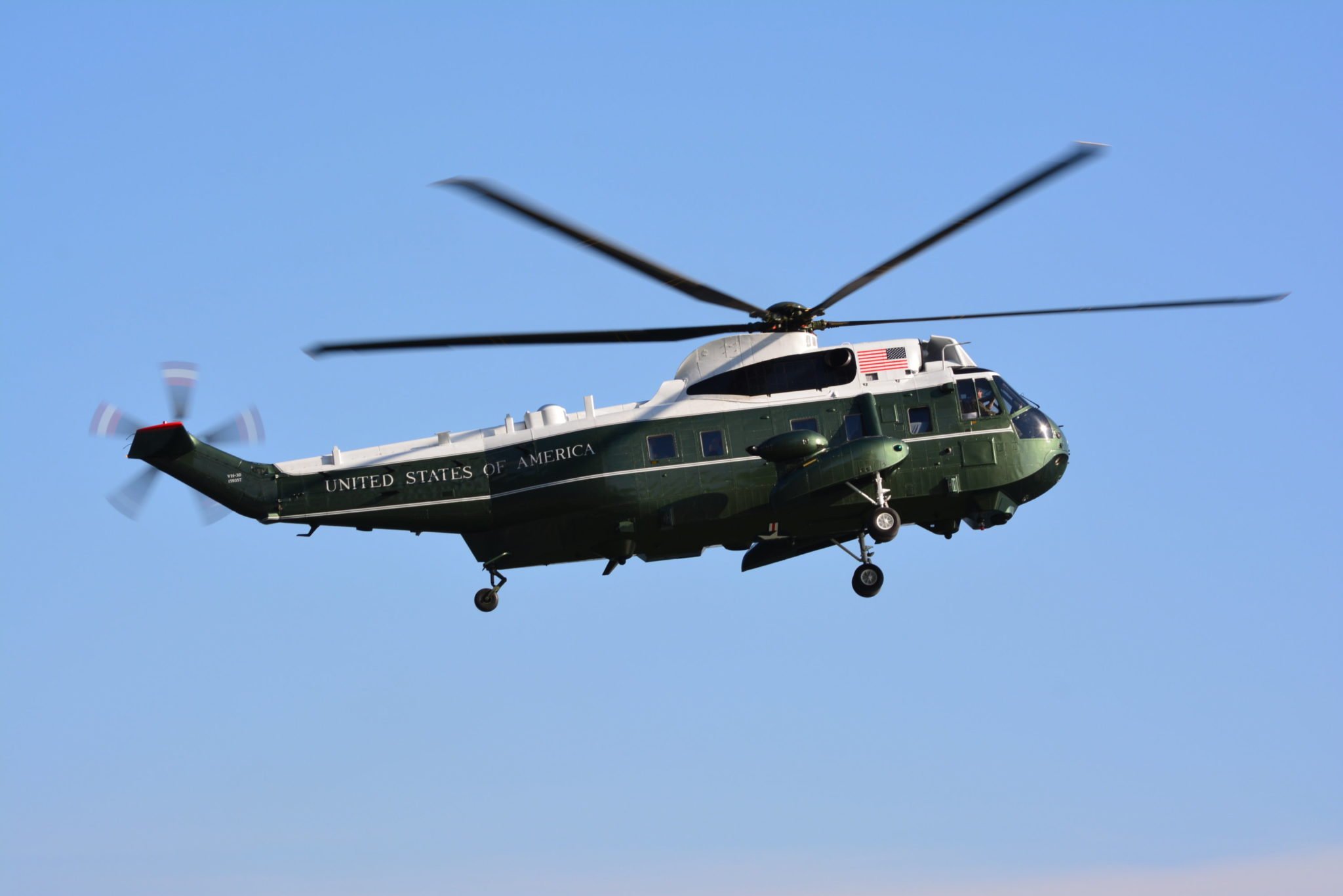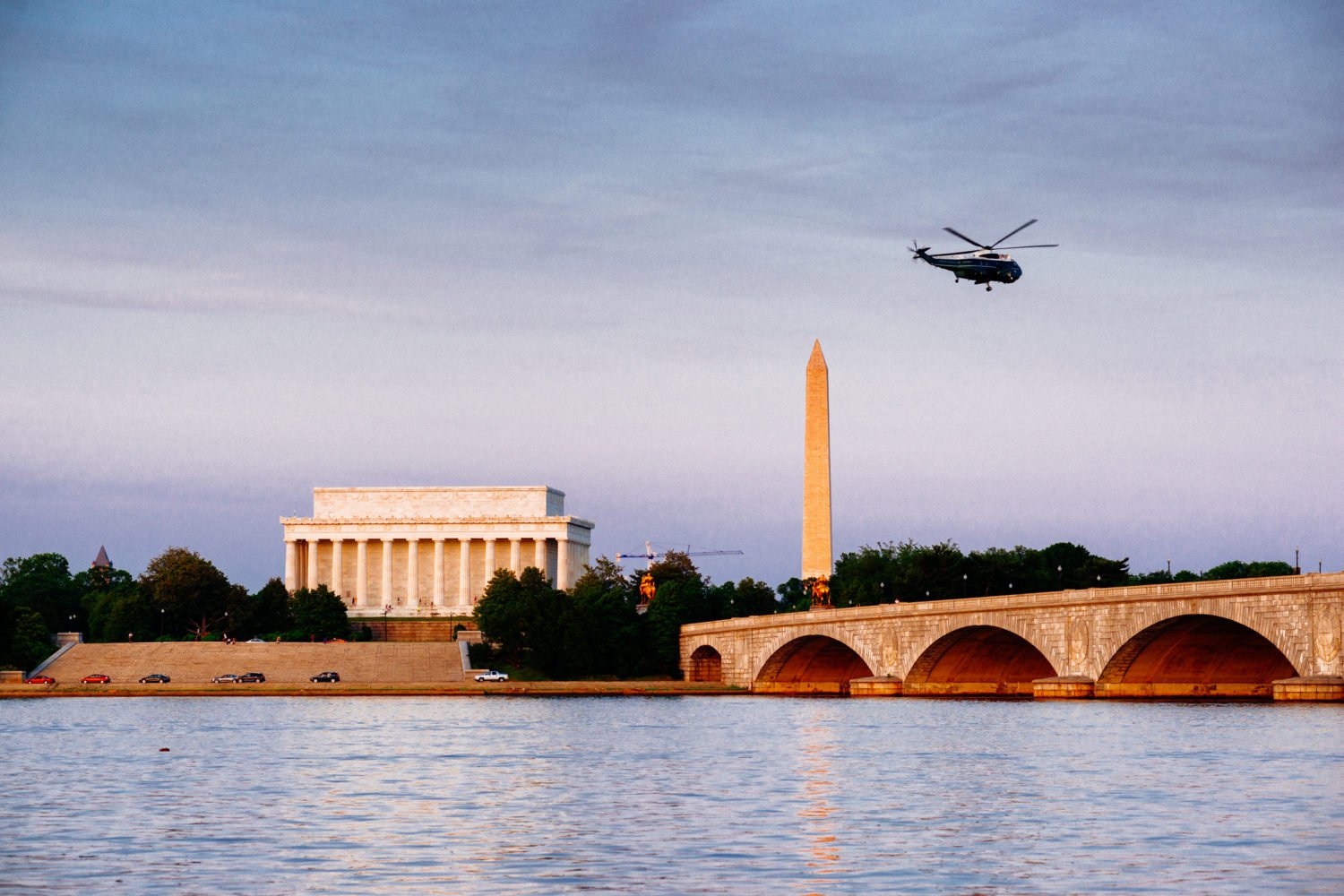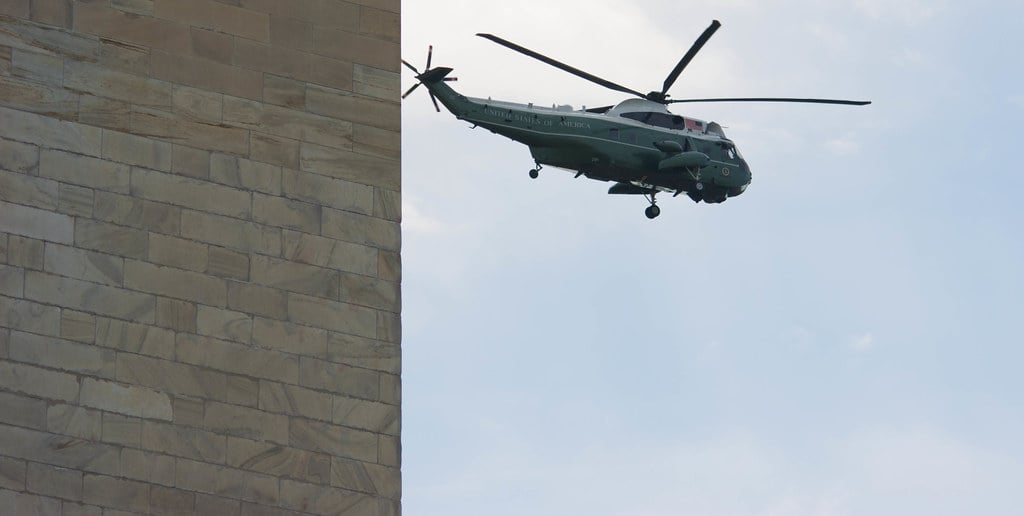Launched earlier this year, Helicopters of DC is a Twitter bot that identifies choppers in the air over Washington. Built and run by Andrew Logan, a freelance audio engineer who lives near Logan Circle, the account is a real boon to local copter trainspotters. We had a few questions about what he’s up to.
Is there a term that you prefer for people who watch helicopters? Copt-spotters? Coptologists?
I don’t have anything in particular. Maybe we need to work on that.
You could just call it bird watching, maybe. So what are some basic things that amateur helicopter watchers should know? If you see a copter in the sky, what can you look out for?
A large volume of the helicopter traffic in DC is medical. So if you’re near a hospital, you can pretty reasonably infer what the purpose of that helicopter is. And if it’s circling, that’s usually a police helicopter or other authority. The Park Police does a lot over the city. That is sometimes in service to the police department but it’s also sometimes in service to the executive branch. The president’s schedule is public, so you can see when he’s about to depart for Andrews [where Air Force One is kept]. Park Police comes and they circle the White House and they circle Andrews Air Force Base. So if you see either of those, typically it’s a sign that that he’s going somewhere or coming back.
What is the rarest helicopter sighting? Are there ones that get you particularly excited?
Over the Fourth of July there was a Chinook, which is a double-bladed helicopter that’s used for air lifting and dropping water on fires and stuff. I would have liked to see that one but I was stuck inside. The other one that is double bladed that is really awesome is the Osprey. That feels like something out of Star Wars when you see it.
Is that the one where the rotors tilt?
Yeah. That was one of my coolest sightings. I was riding my bike past Gravelly Point and it flew over in helicopter form. Then, as it was almost over me, it moved its rotors into plane form and flew off way faster. That was kind of magical.
That was a fall-off-your-bike moment, like the beginning of Three’s Company?
Yeah, and that also might have been the seed for all my helicopter curiosity.
I came across @helicoptersofdc because there was one circling my neighborhood and I went on Twitter to try to figure out what’s going on and came across your account, which I thought was cool.
Did you did you find out what the helicopter was over your house?
I did. It was a police helicopter. There had been a carjacking. So how did you start this?
Essentially, I did the same thing that you did. I was constantly looking for, “What is this helicopter over my house?” I would go on Twitter and was frequently disappointed. So I started playing around with it. The first incarnation I was using something called Open Sky Network, which aggregates this data from ADS-B receivers.
What are ADS-B receivers?
Okay, yeah, I’m thinking about how to break this down. In January [2020], it became mandatory for all [aircraft] to put off a radio signal that says the altitude, the heading sometimes, and their longitude and latitude. And you can pick these up. I use a Raspberry Pi with an antenna and then I upload the data to a user-generated network called ADS-B Exchange. I encourage anyone who would want to get into this further to think about setting up a feeder, which is just probably $60 worth of the Raspberry Pi and the antenna setup and you put it in your attic and then you are contributing to the triangulation of these aircraft.
The aircraft is broadcasting this information as they’re flying and you can pick it up using an antenna.
Yes. It’s intended for one aircraft to see another aircraft reliably because they don’t have radar. Before this, in un-ideal conditions the tower would be telling them, “Well you have another aircraft in this direction of you.” With ADS-B they can get that information directly. At least this is my understanding as a non-pilot.
So there are people around DC who are gathering this information from antennas in their attics and then uploading it.
Yeah. And it doesn’t require a permit so there’s nothing legally dubious about it, because you’re not transmitting.
How did you learn all this stuff?
Googling. [Laughs] I’ve kind of been a nerdy kid for a long time. I’m always interested in learning something new that’s nerdy. Aviation is a newer thing for me. The Twitter bot is written in Python, which I learned for this project.
What do you hope people get from the bot who follow it?
The idea is take information that may be hard to get and make it easy to get. I always have a lot of ideas on how to expand it. There is one that I am pursuing and hope to have up and running in the fall. I want it to reply to DC police department [Twitter account]. Every time they mention there is an [incident] at the 3200 block of Swan Street or whatever, nobody ever knows what block that means, unless it happens to be on a letter street [in which case that number usually corresponds to the cross street]. The goal is to have this Twitter bot recognize that phrase and do what’s called reverse geocoding, which is to take that block of the address that they mentioned, put it into Google, and give you a map back. It would automatically reply to DC police department [tweets] with a map of the block that they’re describing.
For many people who live here, seeing that pair of presidential helicopters is the thing they get most excited about. What can you tell me about that?
The word Marine One or Marine Two only applies when the President or Vice President is in that helicopter. So you can’t just point to a helicopter and say that’s Marine One. But there is one particular type of helicopter, the Sea King, that is the one that he would be in. You see them flying around a lot. I think often it’s training. Just because you see it doesn’t mean that the president’s on it.
What kind of feedback have you been getting? Is there like a helicopter pilot community in DC?
If there is, they don’t want to talk to me about it. [Laughs] It’s been good. People sometimes reach out to me like I’m the expert, like I’m the be all end all of helicopter information and I’m trying my best to only tell them what I know for sure.
Have you been in a helicopter before?
No, I haven’t.
Maybe there’s a fan of the account who’s a helicopter pilot and can take you up.
I would definitely not turn it down.
This interview has been edited and condensed.

















